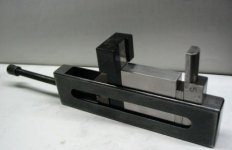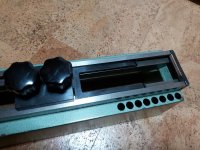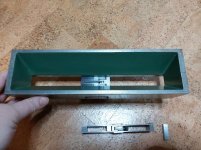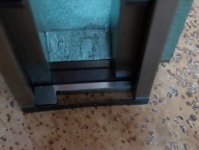The mystery has been solved: It is a gap gauge measuring device.
Yesterday I wrote to Längenmesstechnik GmbH Limbach with two attached photographs of my device.
About 90 minutes after I sent my message, I got a call from Germany (I live in Finland). It was the company founder (of the Längenmesstechnik GmbH Limbach) Heidrun Grimm herself. She told me that my device is a gap gauge measuring device with which gap gauges can be calibrated.
She told me that she made these devices during her apprenticeship at Richard Knauthe KG and was designed by Richard Knauthe.
She promised me that her daughter Kerstin Grimm, will scan some more info and send it my way, which I got in the evening.
Before I go into the technical details, I want to express how awesome it is that companies are still proud of their history and open to providing information. It was lovely and interesting to chat with Heidrun Grimm.
The device is out of production, but the gauge plugs and the recommended gauge blocks are still available.

Image from their PDF about the device.
- The vertical spindle is mounted in one of the holes and supports the gap gauge. This prevents damaging it.
- The correct gap is measured with a combination of gauge blocks and gauge plugs (
Längenmesstechnik GmbH Limbach :: Messdorne).
- The over- and undersized plugs are being changed to determine that exact gap.
- The gauge plug is mounted on the outside of the end but in contact with the gauge block. (I wondered why a part of it was made of spring steel.)

I always liked to collect old and weird-looking devices and then figure out their purpose and how they work. I know, many here are also about that!
I asked for permission to share the two PDFs here and will do that as soon as I get the OK.













